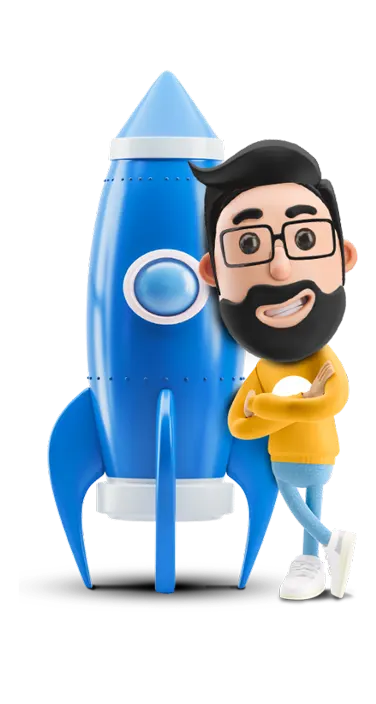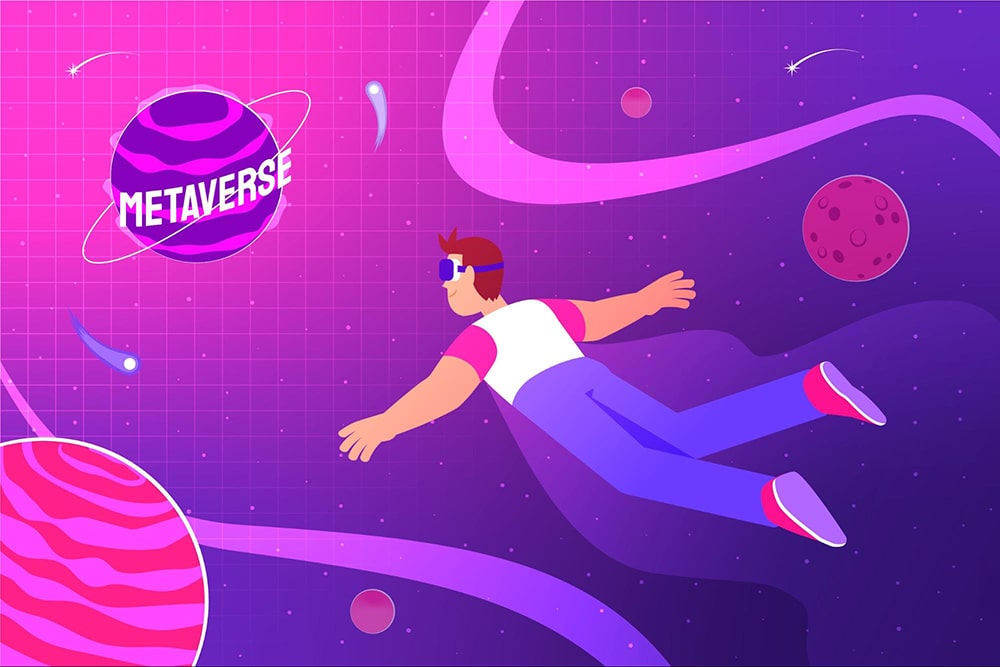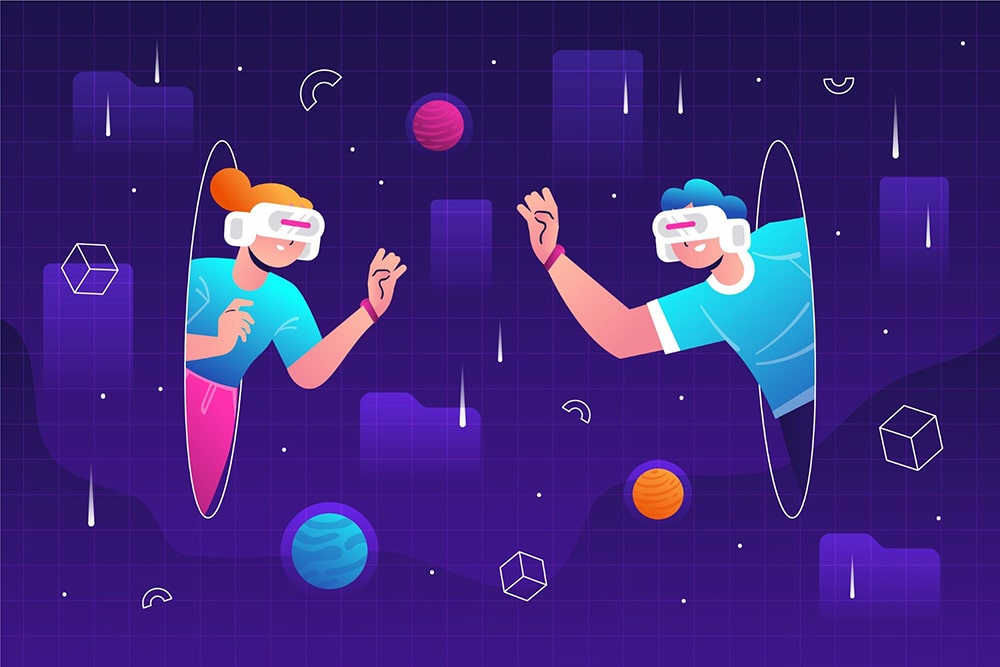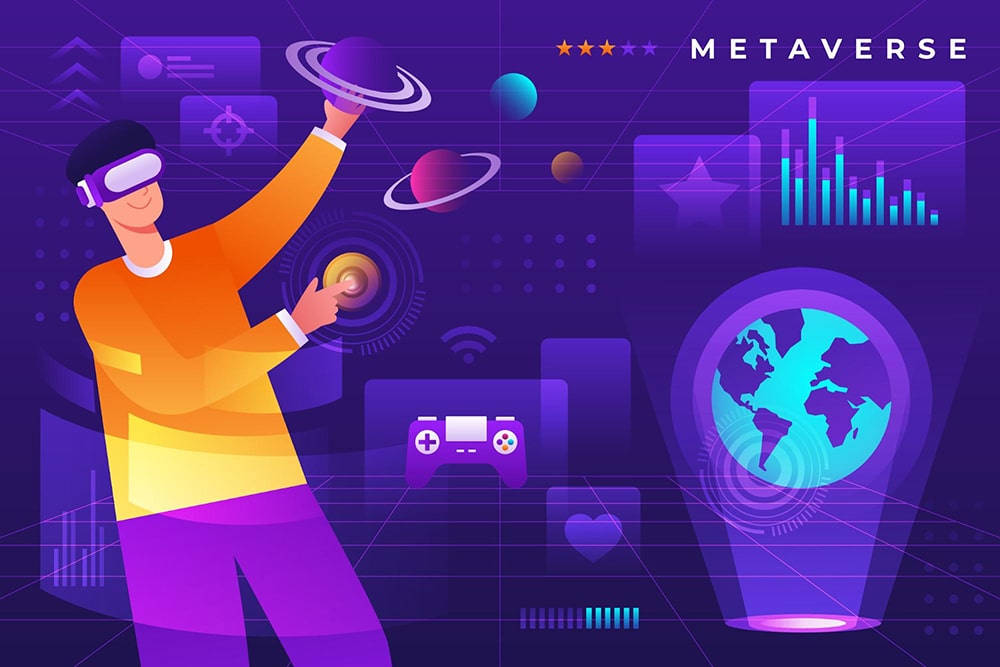
Launching Soon
Join our VIP list to receive early access and a LIFE-TIME discount on your Graphic
Design subscription.



Image: Freepik
Guess what? The metaverse has gone from hypothetical to here and now. In fact, companies like NVIDIA, Microsoft, Apple and even Amazon are developing the metaverse and it might have something to do with a report by McKinsey & Company.
The report’s preliminary forecast showed the metaverse has the potential to grow up to $5 trillion in value by 2030 with e-commerce as the largest economic force ($2.6 trillion). The $120 billion investment by companies, venture capital and equity firms in 2022 also adds credibility to the report forecast.
The metaverse is growing too big to ignore. But before we get ahead of ourselves to tell you how to use it, let’s run through what it is exactly. The word ‘Meta’ in metaverse means ‘Beyond’ in Greek. Thus, you can consider that the Metaverse is an extension of our universe.
Think of it as the internet in 3D where you are in a virtual world that exists even when you are not playing. For gamers, the Metaverse is a virtual reality MMORPG and for everyone else, it’s your sci-fi dream come true.

Image: Freepik
When the job scope of a digital designer is to consider the medium of the design, user experience, interactivity and overall aesthetic balance, one can say the Metaverse offers an opportunity to tap into their creativity beyond this reality.
The Metaverse is a place for digital designers to leverage a fully connected virtual space where their work can be appreciated in an immersive world. For creatives, the Metaverse is a place where you can embody digital avatars that offer you a completely different perspective.
As a platform that stands on the precipice of Web 3.0, the following roles in digital design will become crucial for the adoption of the metaverse.
Specialists in the art of the visual design and layout of a website or app. This includes landing pages, PDFs and any other standalone page.
All about function and usability while advocating for the users at every stage. UX Designers conduct regular testing to ensure the products they are designing are accessible and enjoyable for the users to interface with.
With a focus on the interface’s visual elements, the UI designer works closely with the UX designer to bring the digital interface to life with colour, typography and shapes. They are usually in charge of creating visual guides and IU pattern libraries.
This is the commercialisation arm of the digital design team where the focus is on the business and brand. Often mistaken for UX designers, however, product designers consider how digital products should work, the costs and the broader scope of the product within the company’s context.
The priority for an interaction designer is on the points of interactions between the users and the product. Oftentimes, designers would use sound or animation to enhance the digital experience.
Although it's important to note that In job postings, the keyword “Digital Designer” is often reflected in the description and some designers are required to play all the designer roles mentioned or part of it.

Image: Freepik
It can be challenging to navigate this new digital frontier especially if you are new to the world of digital design. To get you on track, we collected insights from our team of experienced creators on what areas to pay attention to while crafting Metaverse design.
1. Design for Interaction and Storytelling
The most significant difference between how we use the internet today and how we will use the Metaverse is mainly the interaction. The entire concept of the Metaverse revolves around immersive experiences such as exploring outer space or reliving a significant piece of history. Successfully designing for the Metaverse needs to go beyond passive viewing and towards providing more opportunities to engage and be part of the story.
As the designer, your role is to guide your users through the story where their choices move the narrative forward. To get started, you can reuse common interaction mechanisms from games such as Detroit: Become Human, Until Dawn and Life is Strange, although you may need to refer to games like Fortnite, Minecraft and Roblox for your foundation on incorporating a 3D space.
According to Gartner Inc, 25% of people are expected to spend at least an hour a day in the metaverse for work, shopping, social and/or entertainment. To command their attention and purchasing power, it’s crucial to have enough touch points in your digital design for them to feel like the main character in the buying journey.
2. Design for Augmented and Virtual Reality
Augmented reality is the interactive experience of a real-world environment with a digital overlay involving visual, auditory or other sensory information in order to enhance the user’s experience. Virtual reality on the other hand is a computer-generated simulation of three-dimensional images or environments where users can interact using special electronic equipment.
The world of the Metaverse involves the use of either augmented reality or virtual reality. As a digital designer, it’s important to fully understand the platform you are designing for to offer users an all-around experience.
Tempting as it may be, don’t try too many things at once. Be specific about the purpose of your digital design so your users stay engaged in the various layers of the new digital reality.
3. Focus on Accessibility
The metaverse offers a unique opportunity to be inclusive of a variety of abilities that expands on what is currently available on Web 2.0. Avatars that are used in virtual reality can help people with disabilities be able to socialise better and perhaps even acquire work opportunities that their current disability prevents them from having in our reality.
While we might be jumping the gun here, it is worth it for digital designers to consider incorporating accessible touch points specific to people with disabilities.
With every technological advancement, there are layers upon layers of technological adaptation that need to be considered. In the case of using virtual spaces, it’s important to consider building in accessible technologies to encourage early adopters to stay comfortable in the virtual space for long periods of time. Your role as a digital designer is to build up the layers of reality in phases so your users can find their sea legs progressively.
4. Explore new tools for 3D modelling
Goodbye Figma and 2D modelling, the Metaverse’s 3D modelling capabilities are here to take over. 3D modelling is one area that all digital designers must strive to upskill as the premise of the Metaverse is creating realistic worlds for greater user immersion. If you are not a gamer, it might be high time to check out Fortnite, Minecraft and Roblox to develop a better understanding of creating a 3D space.
For movie buffs, this might be a good time to watch or rewatch Ready Player One for some inspiration.
Designers should explore and master 3D modelling tools like Blender, Cinema 4D and Houdini. Getting to grips with these softwares early will teach you the fundamentals of 3D designing, modelling and prototyping in the Metaverse – remember, the early bird catches the worm!
 As the name implies, the Metaverse is a digital space for you to go beyond but to go beyond, you must have the basics down which include proper research of user persona, developing storyboards, creating a user journey and more. Going at it alone and learning it all from scratch is admirable but if you want to spend more time building your business, you can leave the digital design work to us!
As the name implies, the Metaverse is a digital space for you to go beyond but to go beyond, you must have the basics down which include proper research of user persona, developing storyboards, creating a user journey and more. Going at it alone and learning it all from scratch is admirable but if you want to spend more time building your business, you can leave the digital design work to us!
Brandripe is a design company fueled by creators who have been carefully selected for their impressive industry experience. We have helped a wide range of brands from industry giants to start-ups in scaling up across the region. Even before the Metaverse hype, it has been our core belief to honour ethical design and be the driving force to help make the world a better place with our skills. We have pledged to provide creative support and graphic design to local and regional charities.
Let us be your partner in this new frontier and get ahead of your competitors. We offer monthly flat rates, a flexible cancellation policy, unlimited requests and more business-tailored features to meet your growing needs.
Schedule a 15-minute VIP demo call with us now and our sales representative will guide you on the best proposal to make your Metaverse dreams come true!

